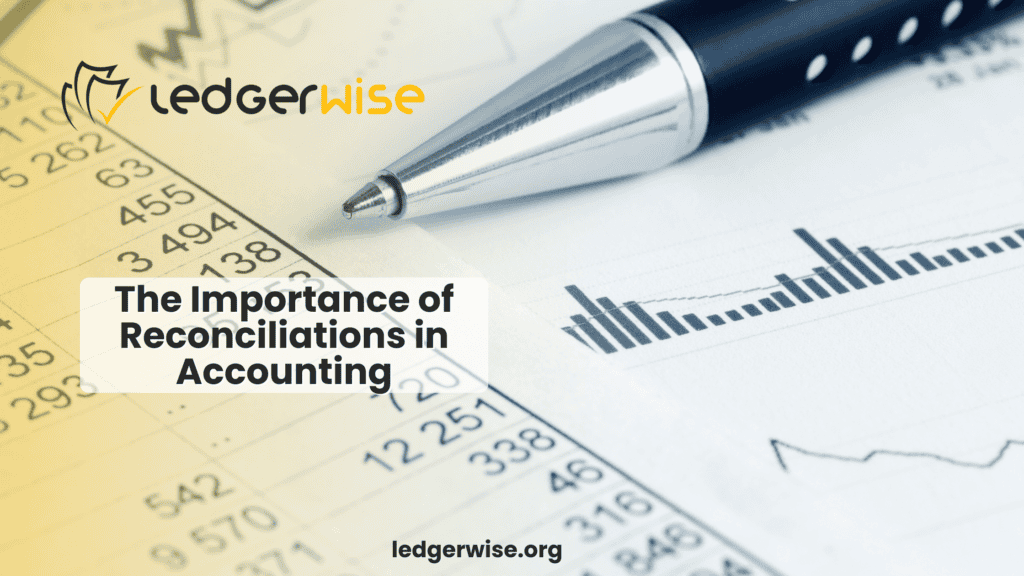Reconciliations are a vital part of maintaining accurate financial records for any business. They guarantee that the financial information in your books corresponds with outside documents such bank statements, invoices from suppliers, and payments from customers. Businesses can identify inconsistencies, stop fraud, and guarantee adherence to financial standards by comparing these records. This blog will outline the fundamentals of reconciliations and discuss their significance for preserving financial stability.
What is Reconciliation?
Reconciliation involves comparing two sets of records with the intention of ensuring that they “match” and are accurate. For example, you can reconcile your firm’s internal ledger against a bank statement. The process identifies discrepancies, unrecorded transactions, and errors, which can then be rectified to maintain accurate financial records.
Why Reconciliation Matters
Reconciliation is more than a bookkeeping procedure; it’s a protective strategy for your business. Here’s why:
- Financial Record Accuracy: Reconciliations ensure that your financial records are correct and current, which is essential for making informed business decisions.
- Fraud Detection: Regularly scrutinizing records helps detect unauthorized transactions or unusual activities that may indicate fraud.
- Regulatory Compliance: Many regulations require businesses to maintain proper records. Reconciliation ensures compliance and helps avoid penalties.
- Cash Flow Management: Reconciling accounts provides a clear picture of your cash flow, helping you plan for expenses and investments.
- Error Correction: Reconciliations catch mistakes such as double entries or missed transactions before they snowball into bigger issues.
Common Types of Reconciliations
Businesses perform various types of reconciliations depending on their operations. Here are the most common:
- Bank Reconciliation: This involves reconciling your firm’s cash records with the bank statement to ensure equal balances. Differences, such as outstanding checks or deposits in transit, are accounted for through journal entries.
- Accounts Receivable Reconciliation: Ensures that the amount owed to your business by customers matches the total in your accounts receivable ledger.
- Accounts Payable Reconciliation: Ensures that the amount your business owes suppliers matches the accounts payable ledger.
- Credit Card Reconciliation: Compares credit card statements with internal accounting records of expenditures.
- Inventory Reconciliation: Ensures that actual inventory matches the records in your accounting system.
The Reconciliation Process
Reconciliation Services might sound complicated, but it becomes simple if done regularly. Here’s how it usually works:
- Gather Records: Collect all relevant documents such as bank statements, invoices, and internal ledgers.
- Compare Data: Match transactions in your internal records with external documents. Identify discrepancies such as missing or duplicate transactions.
- Investigate Differences: Determine the cause of the differences, such as timing issues, unrecorded fees, or accounting errors.
- Make Adjustments: Correct errors in your books by adding missing transactions or adjusting incorrect amounts.
- Review and Finalize: Once adjustments are made, ensure that both sets of records match. Document the reconciliation process for audit purposes.
Best Practices for Effective Reconciliation
To make reconciliations smoother and more effective, follow these best practices:
- Regular Reconciliations: Perform reconciliations frequently, such as weekly or monthly, to promptly identify and resolve issues.
- Use Accounting Software: Tools like QuickBooks or Xero can automate reconciliation tasks, saving time and reducing errors.
- Segregation of Duties: Assign reconciliation work to staff who do not record transactions to enhance accuracy and minimize fraud risks.
- Keep Detailed Records: Maintain proper documentation of reconciliations for accountability and easier audits.
- Review Bank Statements: Regularly check bank statements to spot unusual transactions or unauthorized charges.
Why Choose Ledgerwise.org for Reconciliation Services?
To guarantee that your financial records are correct and in compliance, Ledgerwise.org provides professional bank reconciliation and bookkeeping reconciliation services. Their account reconciliation services are intended to help you find inconsistencies, simplify your procedures, and get useful information for improved money management. Ledgerwise.org assists companies in maintaining financial integrity and making data-driven decisions with an emphasis on accuracy and efficiency.
FAQs About Reconciliation
1. How often should businesses reconcile their accounts?
Ideally, key accounts like bank and credit card accounts should be reconciled monthly. For high-volume accounts, reconciliation may need to be done weekly or even daily to catch discrepancies promptly.
2. Can reconciliation tasks be automated?
Yes, using accounting software can automate reconciliation tasks, improving accuracy and saving time. Services like those from Ledgerwise.org also provide professional support to ensure efficient and accurate reconciliations.
Conclusion
Reconciliation is a cornerstone of sound financial management. By ensuring that your records align with external documents, you can maintain accuracy, detect fraud, and ensure compliance with regulations. Adopting best practices and leveraging services like those offered by Ledgerwise.org can simplify the reconciliation process and provide peace of mind. Don’t overlook the importance of account reconciliation services in safeguarding your business’s financial health.


